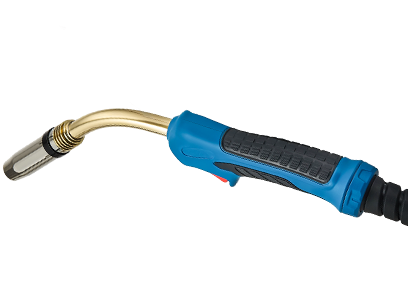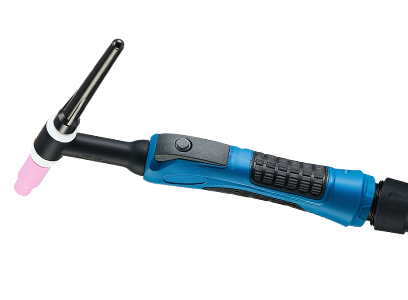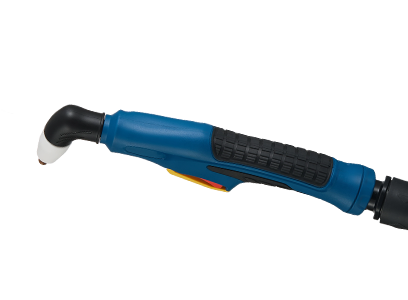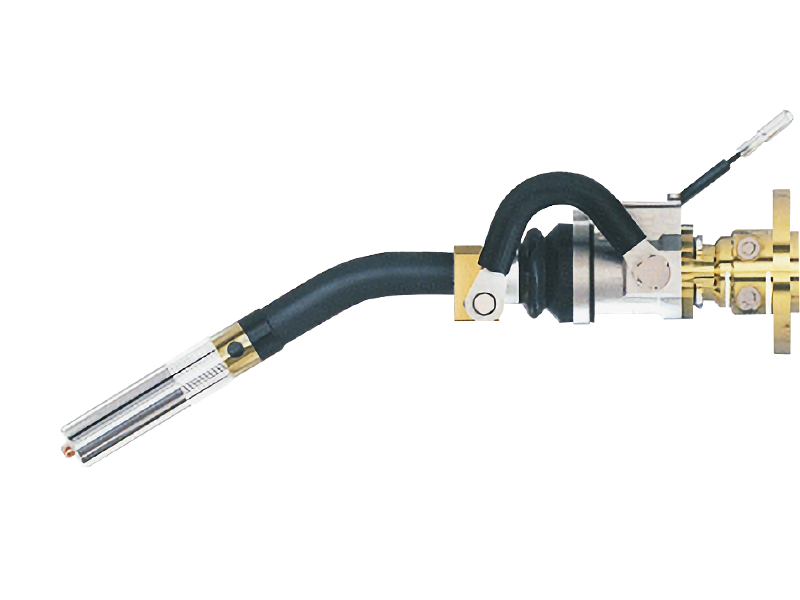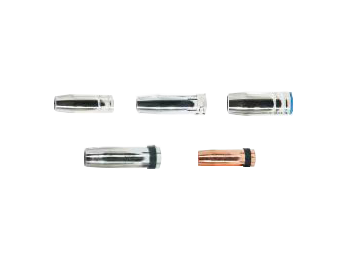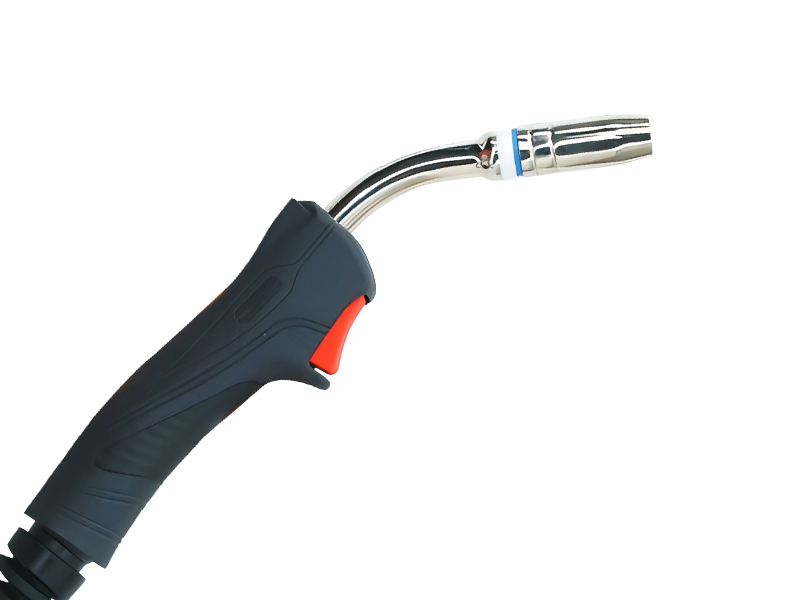Choosing the Right MIG Welding Torch Accessories for Your Needs
Choosing the Right MIG Welding Torch Accessories for Your Needs
In the world of welding, precision and efficiency are paramount. The right tools and accessories can make all the difference in achieving a clean, strong weld. When it comes to MIG welding, the torch and its accessories play a critical role in ensuring optimal performance. This comprehensive guide will help you navigate the various MI
Choosing the Right MIG Welding Torch Accessories for Your Needs
In the world of welding, precision and efficiency are paramount. The right tools and accessories can make all the difference in achieving a clean, strong weld. When it comes to MIG welding, the torch and its accessories play a critical role in ensuring optimal performance. This comprehensive guide will help you navigate the various MIG welding torch accessories available, allowing you to select the ones best suited to your unique projects and needs.
Understanding MIG Welding and Its Components
Before diving into accessories, it’s essential to understand what MIG welding entails. MIG, or Metal Inert Gas welding, is a popular process that uses a continuous wire feed as an electrode to join metals. The process involves several key components:
The MIG Welding Torch
The MIG welding torch is the primary tool used in the welding process. It delivers the filler wire to the weld area and provides the necessary shielding gas to protect the weld pool from contamination.
The Filler Wire
Filler wire is the material melted into the weld joint to create a solid bond. It comes in various diameters and compositions, depending on the metals being welded.
The Shielding Gas
Shielding gas protects the molten weld pool from atmospheric contaminants. Common gases used include argon, carbon dioxide, and helium, often in combination to enhance performance.
Why Choosing the Right Accessories Matters
Selecting the right MIG welding torch accessories is crucial for several reasons:
1. **Efficiency**: The right accessories can significantly improve your welding speed and quality.
2. **Safety**: Proper accessories can reduce the risk of accidents or damage during welding.
3. **Cost-Effectiveness**: Choosing compatible and high-quality accessories can minimize material waste and improve the lifespan of your tools.
Essential MIG Welding Torch Accessories
Let’s explore the must-have MIG welding torch accessories that can enhance your welding experience.
1. Contact Tips
Contact tips are critical components that transfer the electric current to the filler wire. When choosing contact tips, consider:
- **Diameter**: Match the contact tip diameter with your filler wire size for optimal performance.
- **Material**: Copper-tipped contact tips are standard, but some may have coatings to enhance durability.
2. Nozzles
The nozzle directs the shielding gas around the weld area, preventing contamination. Types of nozzles include:
- **Gas Diffuser Nozzles**: These are standard nozzles that provide adequate gas coverage.
- **Funnel Nozzles**: Ideal for heavy-duty welding tasks, funnel nozzles offer enhanced gas flow.
- **Short Nozzles**: Useful for tight spaces, these nozzles facilitate easy maneuverability.
3. Liners
The liner guides the filler wire from the spool to the contact tip. Selecting the right liner is essential for smooth wire feeding. Consider:
- **Material**: Steel liners are durable, while Teflon liners reduce friction for smoother operation.
- **Length and Diameter**: Ensure the liner length and diameter match your welding torch specifications.
4. Spool Hubs
Spool hubs secure the wire spool to the welding machine. Ensure compatibility with your machine and choose ones that allow for easy wire changes.
5. Gas Regulators and Flow Meters
Gas regulators control the flow and pressure of the shielding gas. A good regulator ensures consistent gas flow, which is crucial for high-quality welds.
- **Adjustable Flow Meters**: These allow precise control over gas flow rates, enhancing welding performance.
- **Dual Gauge Regulators**: Provide pressure readings for both the cylinder and the outlet, ensuring optimal performance.
6. Welding Gloves and Protective Gear
While not technically accessories, appropriate safety gear is essential for MIG welding. Invest in high-quality gloves, helmets, and protective clothing to safeguard against burns and sparks.
Factors to Consider When Choosing MIG Welding Torch Accessories
When selecting MIG welding torch accessories, keep the following factors in mind:
1. Compatibility with Your Welding Machine
Ensure that the accessories you choose are compatible with your specific MIG welding machine. Check the manufacturer's specifications and recommended accessories.
2. Material and Durability
Opt for accessories made from high-quality materials to ensure longevity and reliable performance. Copper, steel, and high-temperature plastics are popular choices.
3. Application and Project Requirements
Consider the type of projects you’ll be working on. Heavy-duty projects may require more robust accessories, while lighter tasks may not need the same level of durability.
4. Cost vs. Quality
While it's tempting to opt for cheaper accessories, investing in high-quality products can save you money in the long run by reducing the frequency of replacements and improving welding quality.
Maintenance Tips for MIG Welding Torch Accessories
Proper maintenance of your MIG welding torch and its accessories is essential for optimal performance. Here are some tips:
1. Regular Inspections
Regularly inspect your accessories for signs of wear and tear. Replace contact tips and nozzles as needed to ensure consistent performance.
2. Cleanliness
Keep your welding area and tools clean to prevent contamination. Dirt and debris can adversely affect weld quality.
3. Proper Storage
Store your accessories in a dry, clean environment to prevent damage. Use appropriate containers or cases to protect them from impact and moisture.
4. Follow Manufacturer Guidelines
Always refer to the manufacturer’s guidelines for maintenance and replacement schedules. Adhering to these recommendations will prolong the life of your accessories.
Frequently Asked Questions (FAQs)
1. What is the best type of contact tip for MIG welding?
The best type of contact tip depends on your filler wire size and the materials you are welding. Copper tips are generally preferred for their conductivity and durability.
2. How often should I replace my MIG welding torch accessories?
It’s recommended to inspect your accessories regularly and replace them when signs of wear become apparent. Contact tips may need replacement after several hours of use, depending on the welding conditions.
3. Can I use different gas mixtures with my MIG welding setup?
Yes, different gas mixtures can enhance the performance of your welds. Common mixtures include 75% argon and 25% CO2 for general welding, but always refer to the material specifications for best results.
4. What safety gear do I need for MIG welding?
Essential safety gear includes a welding helmet, gloves, flame-resistant clothing, and appropriate footwear to protect against sparks and heat.
5. How do I know which nozzle size to choose for my welding projects?
The nozzle size should match the size of your contact tip and the type of projects you are undertaking. Larger nozzles are suitable for high-amperage welding, while smaller nozzles are better for precision work.
Conclusion
Selecting the right MIG welding torch accessories is vital for achieving high-quality welds and ensuring a safe working environment. By understanding the various components, their functions, and how to maintain them, you can enhance your welding experience and produce superior results. Always consider compatibility, durability, and project requirements when choosing your accessories. With the right tools at your disposal, you are well on your way to becoming a proficient welder, capable of tackling any challenge with confidence.
TAG:
Related Posts
MIG Welding Robots vs. Traditional Methods: A Comprehensive Comparative Analysis
Table of Contents
1. Introduction to MIG Welding and Traditional Methods
2. Understanding MIG Welding Technology
3. Benefits of Using MIG Welding Robots
3.1 Efficiency and Speed
3.2 Precision and Quality
3.3 Enhanced Safety
4. Overview of Trad

